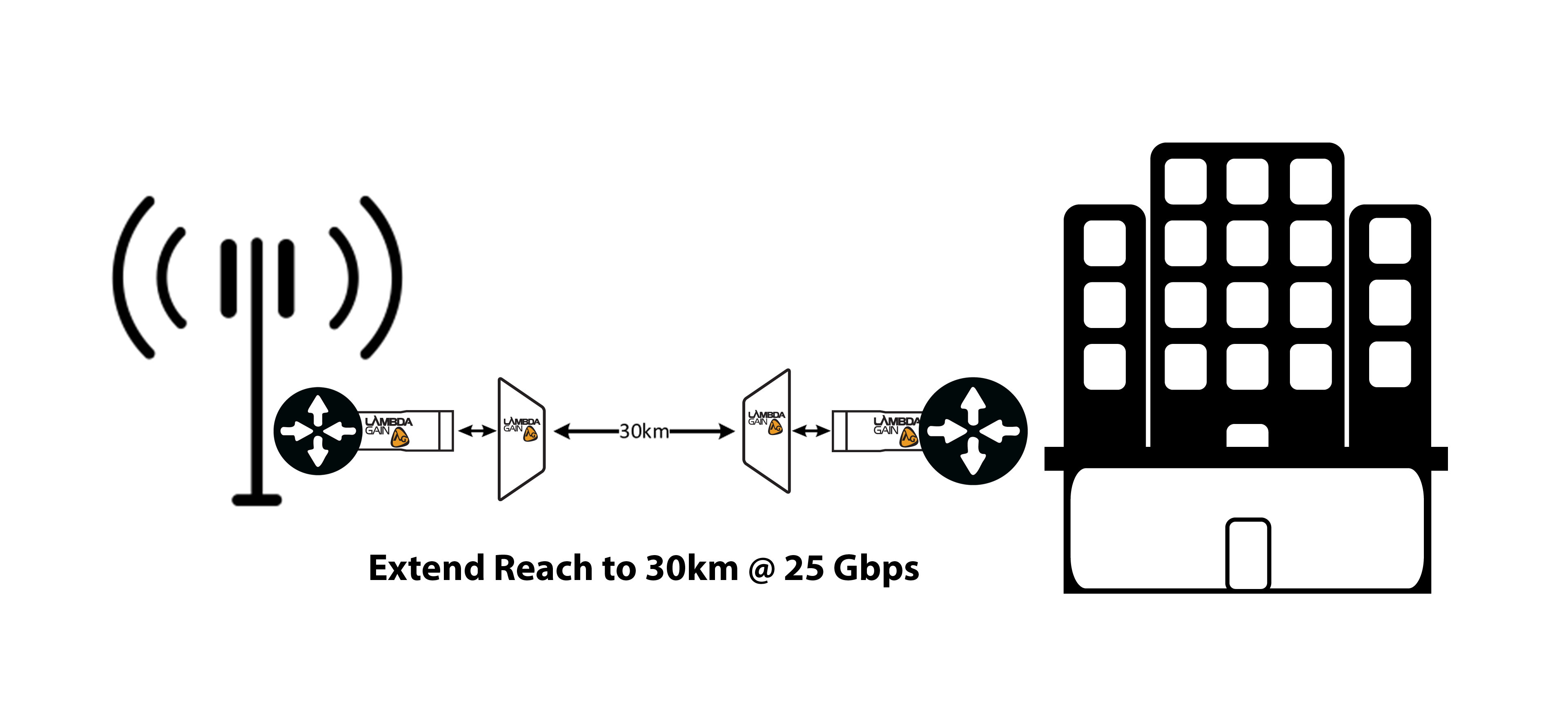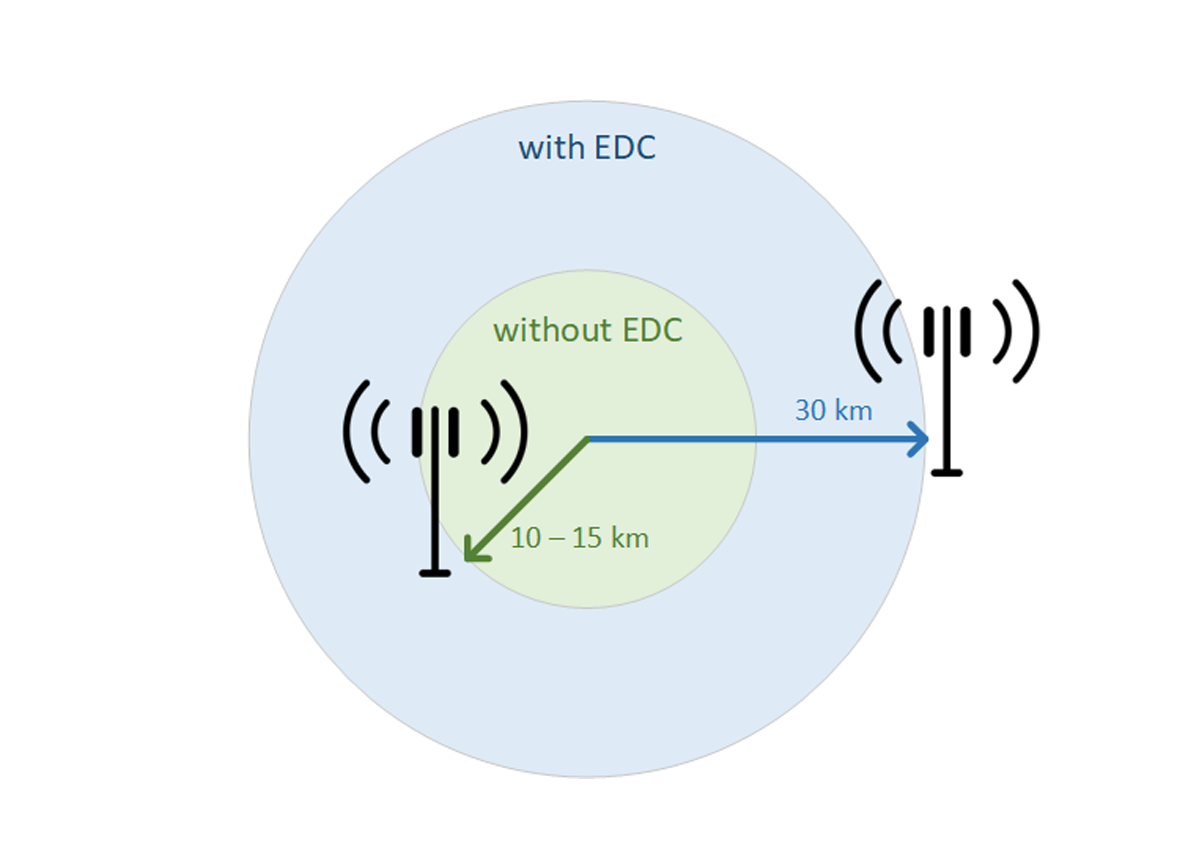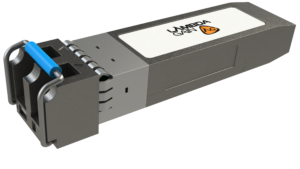
Enhance Reach In 5G Mobile Backhaul Using Electronic Dispersion Compensation
Application Description
While 5G technology operates wirelessly, its efficiency is intricately tied to the performance of underlying wired communications. Optical fibers, serving as the backbone for existing wireless backhaul networks, play a crucial role in 5G performance. However, the reliance on optical fibers introduces challenges, with chromatic dispersion being a significant hurdle for the range and reliability of 5G networks, especially as the industry transitions to 25G data rates.
Chromatic Dispersion and Its Impact:
Chromatic dispersion, stemming from the wavelength-dependent speed of light in optical fibers, poses a formidable challenge by causing distortions in transmitted signals. This dispersion occurs as the input signal spreads out during propagation, influenced by factors like varying velocities of light rays, interactions with electrons, and spectral absorption. The consequence is a distortion of signal features and encoded bit symbols, limiting the transmission range and decoding reliability of optical signals.

Figure 1: Chromatic Dispersion over Fiber
Evolution to 25G and Challenges Faced:
As the 5G wireless infrastructure advances to 25G and beyond, the issue of compensating for chromatic dispersion becomes increasingly complex. Traditional methods involve bulky Erbium-doped fiber amplifiers (EDFAs) and Dispersion Compensating Fibers (DCFs), making deployment costly and intricate. The adoption of 25G data rates exacerbates the challenge, as conventional 25G DWDM transceiver options struggle to provide an effective solution, leading to a trade-off between link distance and performance.
Electronic Dispersion Compensation (EDC) as a Solution:
An alternative and promising solution is Electronic Dispersion Compensation (EDC), a process involving electronic filtering, or equalization, designed to counteract the adverse effects of chromatic dispersion within optical links. Unlike traditional methods that operate in the optical domain, EDC takes place in the electrical domain, resulting in significant cost savings at the system level. By dynamically adjusting the phase and amplitude of transmitted signals using signal processing algorithms, EDC effectively neutralizes distortions induced by varying propagation speeds at different wavelengths. While EDC adds a bit of delay, it’s significantly less than alternative technologies that employ more advanced modulation or FEC techniques.

Figure 2: EDC and Impacts to the Eye Diagram
Key Features and Advantages of EDC:
- Real-time Adaptability: EDC continuously monitors and adjusts transmitted signals in real-time, ensuring adaptability to changing optical conditions and optimal performance.
- Compatibility with High Data Rates: Particularly crucial at higher data rates like 25 Gbps, EDC facilitates seamless communication at elevated speeds, addressing the pronounced impact of chromatic dispersion.
- Cost-Effective Solution: Implementation of EDC eliminates the need for costly hardware upgrades or the deployment of dispersion compensating fibers, providing a cost-effective and scalable solution for optical communication systems.
- Enhanced Signal Quality: By mitigating the effects of chromatic dispersion, EDC contributes to improved signal quality, reducing errors and enhancing the overall reliability of optical communication links.
LambdaGain DWDM SFP28 with Integrated EDC
The LambdaGain DWDM SFP28 with integrated EDC presents an innovative solution, implementing an EDC engine with CDR to enable 25G transmission at up to 30 Km reach. This transceiver module replaces the need for EDFAs and DCF hardware, thereby dramatically reducing Total Cost of Ownership (TCO) while minimizing deployment complexity.

Figure 3: Extended Reach Backhaul using EDC
Key Features
- SFP28 form factor with NRZ EML TOSA and APD linear ROSA
- Integrated with bi-directional CDR with EDC function
- Data rate(Multi-rate): 10Gbps 25Gbps, support CDR/EDC bypass mode for sub 25G
- Wavelength: C-band, 100GHz grid
- Operating Temperature: -20C to 85C
- EDC expands reach to 30km in C-band DWDM

References: https://www.allaboutcircuits.com/news/point2-extends-the-reach-of-5g-by-40-km-in-new-reference-design/
About FONEX data systems inc.
FONEX data systems inc. (FONEX), with presence across Canada, the USA, France, Italy and Germany, is a telecommunications equipment provider and manufacturer focused on delivering optimised, purpose-built solutions for both wire-line and wireless operators. We combine our collective knowledge of telecommunication architectures, standards, market trends and evolving technologies with a leading edge portfolio of carrier-class products to customize innovative and tangible Access and Metro Edge Network value propositions that deliver to our customers’ business, technical and operational requirements. Reach out to us to get more information! Contact us
